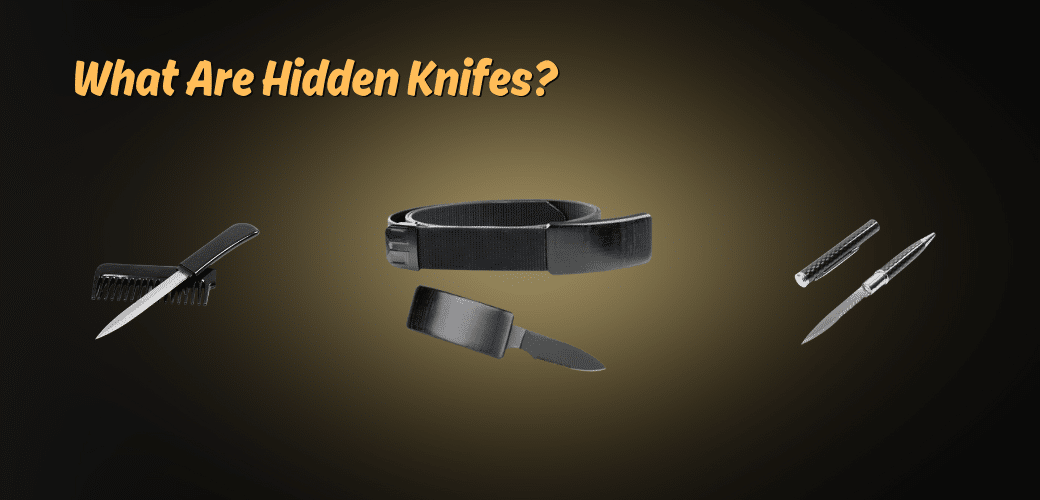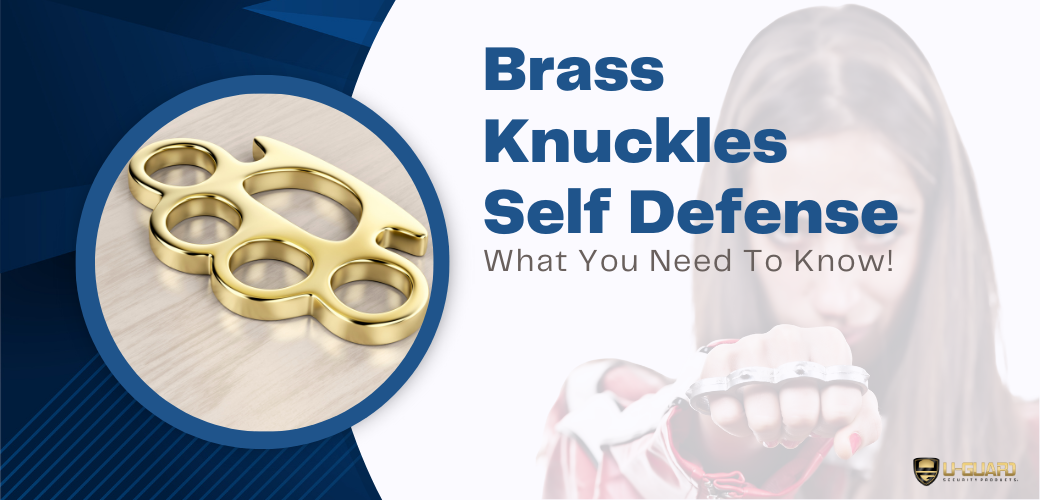When it comes to self-defense, having a hidden knife can provide a sense of security and preparedness in case of an emergency. But what exactly is a hidden knife for self-defense? Is it legal to own and carry one? Is concealing a knife what defines it as a hidden knife, or is it the physical design or style? In this blog post, we will delve into the true meaning of a hidden knife, explore the legality of owning one, discuss the different designs available, and examine the restrictions on disguised knives. Additionally, we will explore the rules surrounding carrying a hidden knife in public spaces, such as on public transportation or on a plane.
Unveiling the Hidden Knife
A hidden knife is ingeniously crafted to blend seamlessly with everyday items, enabling individuals to carry a discreet tool for self-protection without drawing undue attention. These knives are not just about concealment but also about accessibility and practicality, allowing one to remain prepared for unforeseen threats. The design philosophy behind a hidden knife emphasizes compactness and stealth, ensuring that these defensive tools can be integrated into daily attire or accessories such as a pen, belt, or even a piece of jewelry. The intention is to provide an element of surprise, giving the carrier a tactical advantage in a critical situation. By adopting forms that mimic ordinary objects, hidden knives ensure that their carriers are not perceived as a threat while still maintaining an effective means of defense. This clever disguise is what sets hidden knives apart, making them a unique and valuable component of personal security strategies.
The Legality of Concealed Blades
Navigating the legal landscape surrounding concealed blades demands a careful understanding of both local and federal laws. While some jurisdictions may embrace the possession of hidden knives for self-defense, others impose stringent restrictions or outright bans. For instance, certain states require that the knife be visible when carried in public, or they limit the permissible blade length for a concealed knife. Additionally, the classification of a knife as a “concealed weapon” can vary, influencing whether carrying it hidden is lawful or not. It is crucial for individuals to conduct thorough research into their specific locality’s statutes and regulations to ensure compliance. This includes examining not only state laws but also municipal ordinances which may have their own unique stipulations regarding concealed blades. Legal penalties for non-compliance can range from fines to incarceration, underscoring the importance of staying informed about the legalities of carrying a hidden knife.
Diverse Designs of Hidden Knives
The range of hidden knives available is broad and innovative, crafted to suit various personal preferences and tactical requirements. Among the assortment, tactical pen knives stand out for their dual functionality; not only do they serve as a writing instrument, but they also transform into a discreet self-defense tool when needed. Belt buckle knives offer another layer of ingenuity, integrating a cutting edge into a common wardrobe item, making it virtually undetectable. For those looking for an even more inconspicuous option, comb knives provide an excellent solution, masquerading as a simple grooming tool while concealing a sharp blade. Additionally, modern designs have introduced multifunctional items such as necklaces or money clips with hidden compartments for small blades, ensuring that one’s means of protection never has to compromise their style or daily routine. Each design prioritizes ease of concealment and accessibility, ensuring that regardless of the chosen form, the element of surprise remains a constant advantage in self-defense situations.
Legal Restrictions on Disguised Knives
Navigating the complex terrain of laws regarding disguised knives is critical for anyone considering a hidden knife for self-defense. Disguised knives, those cleverly concealed within everyday objects, fall under a distinct legal category due to their potential for misuse. Various jurisdictions have enacted specific statutes that directly address the ownership, carry, and use of these covert weapons. For instance, many states have clear definitions and restrictions on what constitutes a legal concealed carry weapon, and disguised knives often fall into a gray area that requires careful legal interpretation.
Certain federal regulations also play a significant role in determining the legality of these items. Beyond the Federal Switchblade Act, there are guidelines concerning the mailing and transportation of knives that are designed to be undetectable by metal detectors or X-ray machines, marking them as particularly controlled items.
Moreover, the legal ramifications of carrying a disguised knife can extend beyond simple possession charges, potentially implicating individuals in more severe legal scenarios should the knife be used, even in self-defense situations. It’s paramount for individuals to not only understand their local and state laws but to also consider the broader implications of carrying such a device. Being informed and mindful of these regulations is essential for ensuring that one’s choice of self-defense does not inadvertently lead to legal troubles.
Carrying Hidden Knives in Public Spaces
Navigating the protocols for transporting hidden knives through public spaces, such as on public transportation systems or while flying, requires a thorough understanding of not only federal regulations but also local and international laws if traveling abroad. Most notably, the Transportation Security Administration (TSA) strictly prohibits the carry of any type of knife, hidden or otherwise, in carry-on luggage when boarding an aircraft. These items must be securely packed in checked baggage and declared as per the airline’s policies to avoid legal complications. Similarly, public transportation authorities across various states may have explicit guidelines that restrict the carrying of concealed knives, often with stipulations regarding blade length and the manner of carry. The key to legally transporting a hidden knife in these environments lies in meticulous research and adherence to the specific rules laid out by the governing bodies of the spaces in question. Remember, ignorance of the law provides no immunity, and the penalties for non-compliance can be severe. Whether you’re navigating through local transit systems or preparing for air travel, staying informed about the current regulations will ensure that your means of self-defense does not inadvertently position you on the wrong side of the law.





